Find Common Elements In Two Lists Python
1. Introduction
Finding common elements between two lists in Python is a common task in various programming scenarios. It involves comparing the elements in both lists and identifying the ones that appear in both. This process is significant as it allows programmers to perform operations based on the shared elements, such as filtering data, performing calculations, or creating new lists.
2. Understanding the Problem
The problem statement is to find the common elements between two lists. This requires comparing and analyzing the elements in both lists to identify the ones that are present in both. It is important to consider all elements in the lists and determine the common elements accurately.
3. Creating Sample Lists
Creating sample lists is crucial for demonstrating the process of finding common elements. Let’s consider two sample lists:
List1: [1, 2, 3, 4, 5]
List2: [4, 5, 6, 7, 8]
In this example, the common elements are 4 and 5.
4. Using Sets for Finding Common Elements
Sets can efficiently handle finding common elements between two lists. In Python, a set is an unordered collection of unique elements. By converting the lists to sets, it becomes easier to identify the common elements. This can be done using the set() function.
5. Applying the Intersection Method
The intersection() method is an effective way to determine the common elements between sets. It returns a new set containing only the elements that are present in both sets. In Python, this method can be used to find the common elements between the sets created from the lists.
Example:
set1 = set([1, 2, 3, 4, 5])
set2 = set([4, 5, 6, 7, 8])
common_elements = set1.intersection(set2)
print(common_elements)
Output: {4, 5}
6. Utilizing List Comprehension
List comprehension is a concise way to create lists based on existing lists. It can be used to find common elements by iterating over one list and checking if each element is present in the other list. This approach is useful when you want to create a new list containing only the common elements.
Example:
list1 = [1, 2, 3, 4, 5]
list2 = [4, 5, 6, 7, 8]
common_elements = [x for x in list1 if x in list2]
print(common_elements)
Output: [4, 5]
7. Employing the Filter Function
The filter() function can be used to filter out non-common elements from a list. It takes a function and an iterable as arguments and returns an iterator containing only the elements for which the function returns True. By using the filter() function with a lambda function that checks if the element is present in the other list, we can find the common elements.
Example:
list1 = [1, 2, 3, 4, 5]
list2 = [4, 5, 6, 7, 8]
common_elements = list(filter(lambda x: x in list2, list1))
print(common_elements)
Output: [4, 5]
8. Implementing Counter and Dictionary Methods
The Counter class and dictionaries can be used to track and count the common elements between two lists. The Counter class from the collections module provides a convenient way to count the occurrences of elements in a list. By converting both lists to Counters or dictionaries, we can compare the elements and retrieve the common ones easily.
9. Handling Duplicate and Disordered Elements
When dealing with duplicate or disordered elements, the chosen method must be able to handle such scenarios accurately. The methods described above, such as sets, intersection(), list comprehension, filter(), and Counter, can successfully handle duplicate elements but may not maintain the original order. If maintaining the order is important, additional considerations and modifications may be required.
10. Conclusion
In conclusion, finding common elements in two lists in Python is a common task in programming. There are multiple methods available, including sets, intersection(), list comprehension, filter(), and Counter, which can efficiently handle this task. It is important to select the appropriate method based on the specific requirements, such as maintaining order or handling duplicate elements. The ability to find common elements between two lists is valuable for various programming scenarios, allowing for data manipulation, analysis, and creation of new lists based on shared elements.
FAQs:
1. Can you compare two lists in Python?
Yes, Python provides various methods to compare two lists. Some of the methods include converting the lists to sets and using set operations like intersection(), using list comprehension to check for common elements, employing the filter() function with a lambda function, or utilizing the Counter class from the collections module.
2. How can I find common elements in two arrays in Python?
The process of finding common elements in two arrays in Python is similar to finding common elements in two lists. You can use methods like converting the arrays to sets and using set operations, employing list comprehension, using the filter() function, or utilizing the Counter class.
3. How can I find uncommon elements in two lists in Python?
To find uncommon elements in two lists in Python, you can use methods like converting the lists to sets and using set operations like difference(), symmetric_difference(), or union(), or using list comprehension to create a new list containing elements that are not present in both lists.
4. Can I find common elements in two lists with duplicate elements?
Yes, the methods described in this article, such as sets, intersection(), list comprehension, filter(), and Counter, can handle lists with duplicate elements. However, it is important to note that the order of elements may not be maintained in some of these methods.
5. How can I find the difference between two arrays in Python?
To find the difference between two arrays in Python, you can use methods like converting the arrays to sets and using set operations like difference(), symmetric_difference(), or union(), or using list comprehension to create a new list containing elements that are present in one array but not the other.
To Print Common Elements In Two Lists | Python Programs For Beginners | Python Tutorial
Keywords searched by users: find common elements in two lists python Find uncommon elements in two lists python, Java get common elements in two lists, Find common elements in two arrays, Find common elements in two list java, Can you compare two lists in python, Write a NumPy program to print common values between two arrays, Get difference between two arrays Python, Intersection Python
Categories: Top 44 Find Common Elements In Two Lists Python
See more here: nhanvietluanvan.com
Find Uncommon Elements In Two Lists Python
There are multiple approaches that can be used to find uncommon elements between two lists in Python. Let’s explore some of the most commonly used methods:
1. Using the set() function:
The set() function in Python creates a set data structure, which only contains unique elements. By converting both lists to sets and then taking the difference between them, we can easily find the uncommon elements. Here’s an example:
“`python
list1 = [1, 2, 3, 4, 5]
list2 = [4, 5, 6, 7, 8]
uncommon_elements = set(list1) – set(list2)
print(uncommon_elements) # Output: {1, 2, 3}
“`
2. Using list comprehension:
List comprehension can also be used to find the uncommon elements between two lists. It involves iterating over one list and checking if each element is present in the other list. If an element is not found, it is added to a separate list. Here’s an example:
“`python
list1 = [1, 2, 3, 4, 5]
list2 = [4, 5, 6, 7, 8]
uncommon_elements = [x for x in list1 if x not in list2]
print(uncommon_elements) # Output: [1, 2, 3]
“`
3. Using the set() function and symmetric_difference():
The set() function can also be combined with the symmetric_difference() method to find uncommon elements in two lists. The symmetric_difference() method returns a new set that contains elements present in either set but not in both. Here’s an example:
“`python
list1 = [1, 2, 3, 4, 5]
list2 = [4, 5, 6, 7, 8]
uncommon_elements = set(list1).symmetric_difference(set(list2))
print(uncommon_elements) # Output: {1, 2, 3, 6, 7, 8}
“`
Now, let’s address some frequently asked questions about finding uncommon elements in two lists in Python:
**Q: What is the difference between using set() and list comprehension?**
A: The set() function is more efficient when dealing with large datasets, as it automatically handles the removal of duplicates. List comprehension, on the other hand, gives you more flexibility and can be useful in scenarios where you need to perform additional operations on the uncommon elements.
**Q: What happens if the lists contain duplicates?**
A: When using the set() function, duplicates will automatically be removed, and only the unique elements will be considered. However, if you are using list comprehension, the presence of duplicates will affect the output. In this case, you may want to use additional methods, like the count() function, to handle duplicates if needed.
**Q: Can this be applied to other data structures besides lists?**
A: Yes, the same methods can be used to find uncommon elements in other iterable data structures, such as tuples or sets. You just need to adapt the data structures accordingly and use the appropriate methods to get the desired results.
**Q: Are there any considerations when comparing elements of different types?**
A: Yes, it’s important to keep in mind that the above methods rely on comparing the values of elements. If the elements in your lists are of different types, you may encounter unexpected behavior or errors. Ensure that the types are compatible for proper comparisons.
In conclusion, finding uncommon elements in two lists in Python can be easily achieved using various methods. The choice of method depends on the specific requirements of your task and the characteristics of your data. By leveraging the set() function, list comprehension, or the combination of both, you can efficiently compare and identify uncommon elements. Remember to consider the FAQs mentioned above for a better understanding of the topic.
Java Get Common Elements In Two Lists
There are several approaches through which we can achieve our objective. We will start by outlining the most straightforward method and then gradually move towards more optimized approaches.
1. Using Nested Loops:
One approach is to utilize two nested loops to iterate over both lists and compare each element. If a match is found, we append it to a new list or perform any desired operation. However, this method has a time complexity of O(n^2), where n is the total number of elements in both lists. Thus, it is suitable for small lists, but not efficient for larger datasets.
2. Utilizing the retainAll() Method:
Java provides a built-in method called retainAll() that retains only the common elements between two lists. This method can be used to simplify our task. Here’s an example of how we can implement it:
“`java
List
list1.add(“apple”);
list1.add(“banana”);
list1.add(“orange”);
List
list2.add(“banana”);
list2.add(“grapes”);
list2.add(“orange”);
list1.retainAll(list2);
System.out.println(“Common elements: ” + list1);
“`
In the above code snippet, after executing the `retainAll()` method, list1 will contain only the common elements between both lists. However, it’s important to note that this method modifies the original list. If we want to keep the original lists intact, we can create a new list to store the common elements.
3. Using Sets:
Another efficient approach is utilizing Set data structures, specifically the HashSet or TreeSet. Sets do not allow duplicate elements, which makes them perfect for finding common elements. Here’s how we can implement this approach:
“`java
List
list1.add(“apple”);
list1.add(“banana”);
list1.add(“orange”);
List
list2.add(“banana”);
list2.add(“grapes”);
list2.add(“orange”);
Set
Set
set1.retainAll(set2);
System.out.println(“Common elements: ” + set1);
“`
By converting the lists to sets, we eliminate any duplicates and simplify our task. The `retainAll()` method of the set intersection is then used to find the common elements. This approach has a time complexity of O(n), where n is the sum of the number of elements in both lists.
4. Utilizing Java Streams:
Java 8 introduced the Stream API, which provides a functional approach to handle collections. We can utilize the Stream API to achieve our objective as well. Here’s an example:
“`java
List
list1.add(“apple”);
list1.add(“banana”);
list1.add(“orange”);
List
list2.add(“banana”);
list2.add(“grapes”);
list2.add(“orange”);
List
.filter(list2::contains)
.collect(Collectors.toList());
System.out.println(“Common elements: ” + commonElements);
“`
Using streams, we filter out only the elements that are present in both lists and collect them into a new list. This approach is concise and easy to read. However, it has a time complexity of O(n^2), similar to the nested loop approach.
FAQs:
Q: Can we find common elements between lists of different types?
A: Yes, we can find common elements irrespective of their type. The example shown above is for lists of type String, but this approach can be applied to lists of any type.
Q: Is there a performance difference between the different approaches discussed?
A: Yes, there is a performance difference. The nested loop approach has a time complexity of O(n^2), while the Set-based approach and the Stream API approach have a time complexity of O(n). Thus, for larger datasets, using sets or streams is generally more efficient.
Q: Will the order of elements be maintained while finding common elements?
A: The order of elements is not guaranteed to be maintained when using the `retainAll()` method or the Set approach since sets do not maintain any specific ordering. However, if order is crucial, the Stream API approach can be used.
In conclusion, finding common elements between two lists in Java is a common requirement for various programming tasks. We have explored several approaches to accomplish this task, ranging from the simplest nested loop to more optimized options like utilizing sets or Java streams. Depending on the size of the dataset and requirements, developers can choose the approach that best suits their needs.
Find Common Elements In Two Arrays
Arrays are important data structures in computer programming that allow us to store multiple values of the same data type in a single variable. Very often, we come across situations where we need to compare two arrays and find the common elements shared between them. In this article, we will explore various approaches to solve this problem and discover the most efficient solution.
Overview of the Problem
Consider two arrays, Array A and Array B, both containing several elements. The goal is to identify the elements that are present in both arrays and return them as the output. For example, if Array A = [1, 2, 3, 4] and Array B = [3, 4, 5, 6], the common elements are 3 and 4 since they are present in both arrays. The output in this case would be [3, 4].
Approach 1: Brute Force
The simplest and most straightforward approach is the brute-force method. In this method, we compare each element of Array A with each element of Array B to determine if there are any common elements. Although this approach is simple to implement, it has a time complexity of O(n^2) since we have nested loops to compare each element.
Approach 2: Hash Set
A more efficient approach involves utilizing a hash set data structure. We start by converting Array A into a hash set, which allows for constant time complexity lookups. Afterward, we iterate through Array B and check if each element exists in the hash set. If an element is found, it is added to our output array. This solution has a time complexity of O(n), where n is the length of the larger array.
Approach 3: Sorting and Two Pointers
Another approach is to sort both arrays in non-decreasing order and utilize two pointers to track the elements. We start with the first element in each array and compare them. If the elements are equal, we add them to the output array and move both pointers forward. If the elements are not equal, we move the pointer of the smaller element forward. This process continues until we reach the end of either array. This solution also has a time complexity of O(n log n) due to the sorting operation.
Approach 4: Binary Search
If one of the arrays is significantly larger than the other, using a binary search can be an efficient approach. We sort the larger array and then iterate through the smaller array. For each element in the smaller array, we perform a binary search in the larger array. If the element is found, it is added to our output array. This solution has a time complexity of O(m log n), where m is the length of the smaller array and n is the length of the larger array.
Frequently Asked Questions
Q1: Can these approaches handle arrays with different data types?
A1: Yes, these approaches can be used with arrays containing any data type. The comparisons are based on the values of the elements rather than their data types.
Q2: How do these solutions handle duplicate elements within an array?
A2: All of the mentioned solutions handle duplicate elements within an array. If an element is duplicated in both arrays, it will be considered a common element.
Q3: Are there any limitations to these approaches?
A3: The brute-force approach becomes inefficient for large arrays, as its time complexity grows exponentially. The sorting and two pointers approach requires sorting the arrays, which can be costly for very large arrays. The binary search approach is efficient for one significantly larger array, but it may not be suitable if both arrays are of comparable size.
Q4: Can these approaches handle arrays with different lengths?
A4: Yes, these approaches can handle arrays of different lengths. The solutions adapt to the lengths of the arrays and find the common elements accordingly.
In conclusion, finding common elements in two arrays is a common problem in computer programming. We explored various approaches, including brute force, hash set, sorting and two pointers, as well as binary search. Depending on the size and characteristics of the arrays, different approaches may be more suitable. By understanding these techniques, programmers can efficiently solve this problem and optimize their code.
Images related to the topic find common elements in two lists python

Found 32 images related to find common elements in two lists python theme




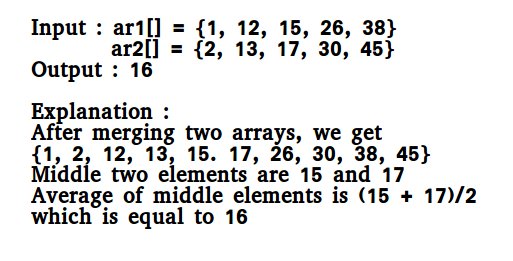
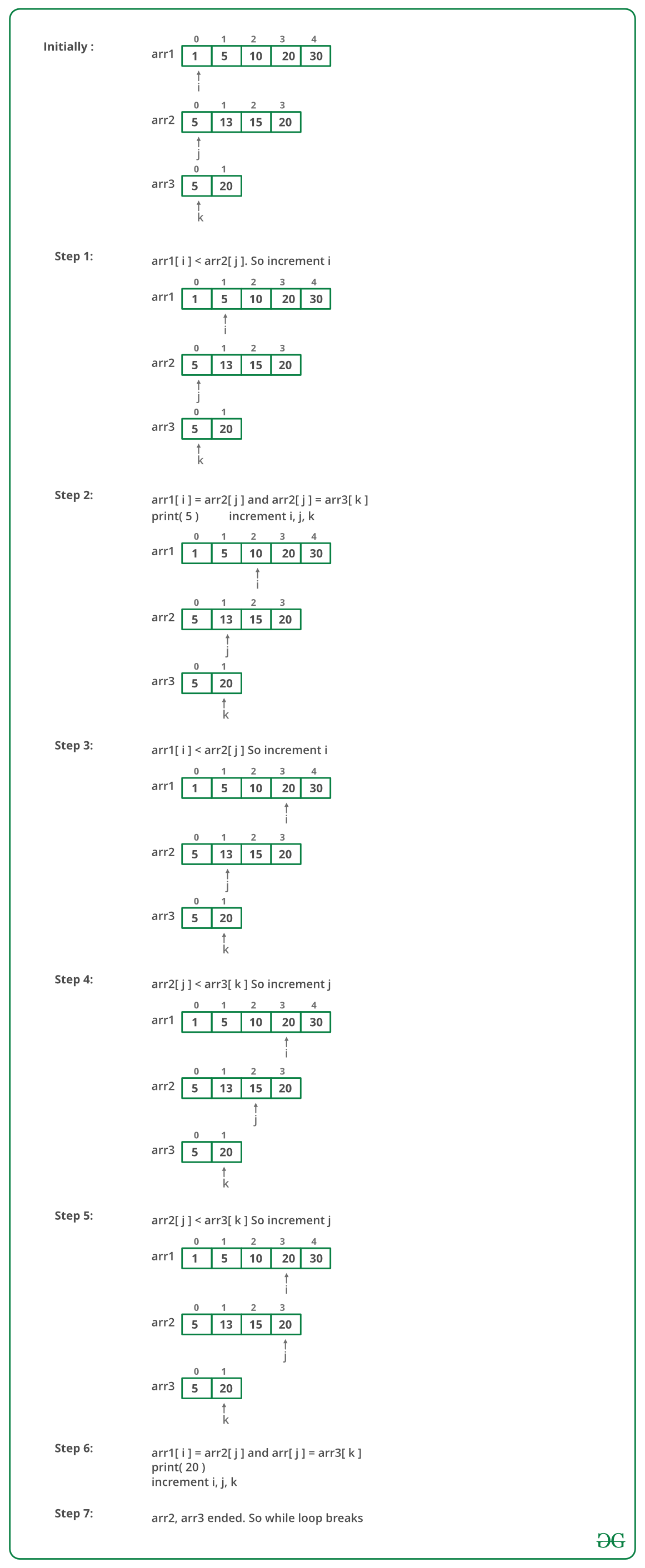
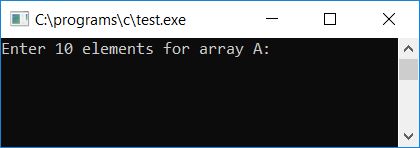











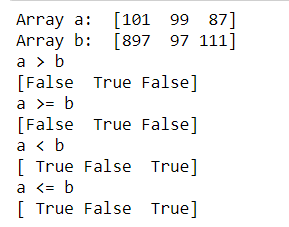


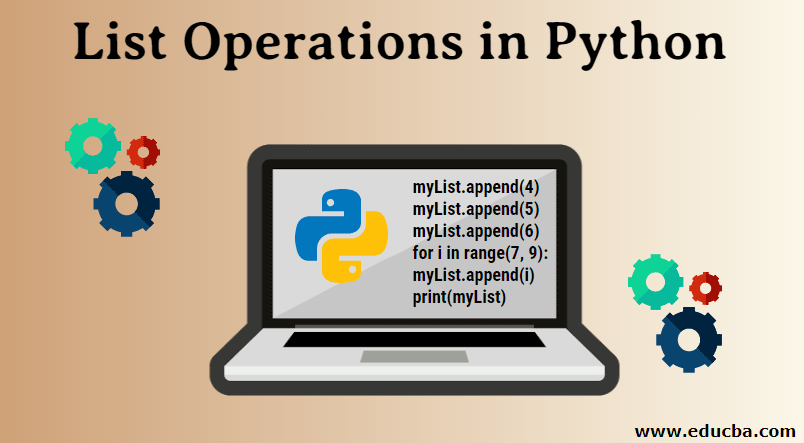



Article link: find common elements in two lists python.
Learn more about the topic find common elements in two lists python.
- Python | Print all the common elements of two lists
- python – Common elements comparison between 2 lists
- Find common elements in two lists in python – Java2Blog
- How to find common elements between two lists in Python
- How to Find Common Elements of Two Lists in Python – Finxter
- Find common values in multiple Lists in Python | bobbyhadz
- Find the common elements in two lists in Python – CodeSpeedy
- Python Program to Find Common Elements in Two Arrays
- Extract common/non-common/unique elements from multiple …
- Remove Common Elements from Two Lists in Python
See more: https://nhanvietluanvan.com/luat-hoc